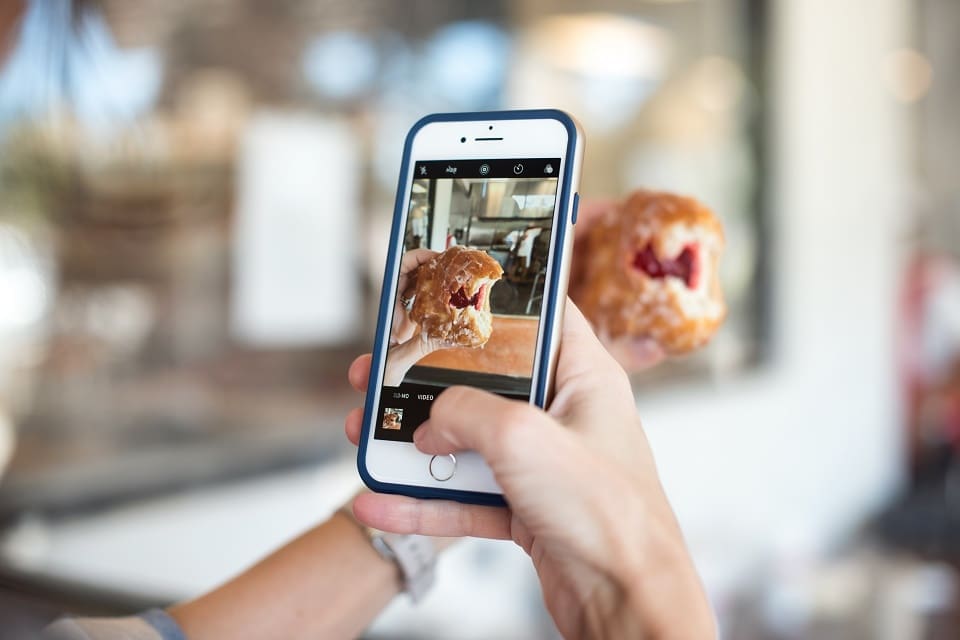“Content is king”
We’re so used to this phrase being thrown around that it’s become rather worn out.
But let’s back up and reflect on how it became so matter-of-fact today: Bill Gates published an essay on the topic in January 1996.
Yes, the Microsoft founder wrote this more than two decades ago. It’s still incredibly relevant today.
We won’t delve into Gates’ writings in this blog post, although we warmly recommend you give it a read if you haven’t already.
We can all agree that it has become crucial for brands to communicate with target audiences by way of their company blog or active presence on the right social media platform.
Creative content is the very foundation of the exposure brands aim for.
This rings true regardless of whether they are personal brands or businesses that offer products/services.
If you own a blog, you already know it’s important to create content that improves SEO. But that’s not all.
Especially today, in the era of social media marketing, you must continually promote your creative content to widen its reach.
That’s where audience engagement comes in.
And what better way to engage your audience than to present them with something they’ll want to show others?
Sharing content: bringing audience engagement to the next level
Today, brands strive to create content that will engage their audience and strengthen communication.
Getting your followers to share the content you post is the “Holy Grail” of engagement.
When your content is shared, it definitely increases your exposure.
Even better, people perceive your brand as more trustworthy when their friends or anyone reputable presents your content with a “vote of approval.”
Of course, we should all be aiming to generate share-worthy content. But how can we know what will compel people to share?
Let’s look into the psychology of sharing to get a better understanding.
To get an idea of what actually constitutes sharable content, we should start by asking ourselves why they might share it in the first place.
Thankfully, we have a reliable study conducted by the New York Times and Latitude Research to give us valuable insight.
You might think that people share only for attention, but that is merely a tiny part of it.
The results of the mentioned study, titled “The Psychology of Sharing”, point to the 5 key motivators for sharing:
1. To bring valuable and entertaining content to others
49% of the study’s respondents said they want to share what they consider valuable with those they care about.
Sharing is a way for them to inform others of the products they like, potentially encouraging them to take action or change their opinions.
2. To define themselves
68% claimed that they share content which will give people a better sense of who they are.
The content they present is not only a way to define themselves to others, but also to strengthen their own identity with content that reflects who they are or aspire to be.
3. To grow and nourish relationships
78% of the respondents found sharing to be a way of keeping in touch or forming stronger bonds.
It is also a way to connect with people who share their interests and to be part of a community.
4. Self-fulfillment
69% share information they find valuable or enlightening, because it will give them a sense of being more involved in the world.
They want to be acknowledged for the valuable information they share.
The study also found that people tend to value information more when they disseminate it, and that they enjoy content more when it is shared with them.
5. To get the word out about what they believe in
84% share the causes or brands they believe in as a way to show support or raise awareness about issues that are important to them.
Sharing is a tool for empowerment to affect change.
Naturally, these motivating factors overlap.
They can all be applicable, but to have any kind of guarantee that your content will be shared, you need to know your audience.
If you look into the way content marketing agencies approach the concept of sharing, you’ll find that they strive to give consumers the tools to realize the core motivations and satisfy their inherent needs.
This is the smartest way to promote a brand, but it requires some further understanding of the types of people you’re trying to reach.
That brings us to the next part.

The same study outlines the 6 different types of online sharers according to their different motivations. They are as follows:
- Altruists: those who want to share valuable content to be helpful, to get the word out about causes or brands they feel strongly about, and to enlighten those that they care about
- Careerists: They share to build and cultivate their professional reputation. They aim for professional networking, so they also exhibit a high level of engagement with content that is shared.
- Hipsters: This group of sharers wants to present creative content that expands their identity. Sharing is a way to kick off a conversation or spur controversy, and they look for cutting-edge content.
- Boomerangs: seek validation. Boomerangs want any kind of reaction from their audience in the form of comments and likes. That’s why they also search for fresh and creative content.
- Connectors: They’re looking to bring people together and stay connected via shared content. They share entertaining content that will cultivate these relationships, as well as deals and events that people will gather around.
- Selectives: As the name suggests, this is a group of people who select very carefully what they share and whom they share it with. They will share only what they think is new and relevant to a certain person, over email or directly with them.
When creatively brainstorming content to create, you will be best served to know these types of personas and recognizing them in the audience base you’re trying to reach.
The Role of Emotion in Social Sharing
Lastly, we can’t overlook the part that emotions play in sharing content.
First, let me refer to the findings of Jonah Berger and Katherine Milkman, professors at the University of Pennsylvania.
They analyzed just under 7,000 articles of The New York Times in order to determine the distinguishing characteristics of those that were emailed the most.
Berger and Milkman discovered two primary factors that compelled people to share articles via email: how the article enticed positive feelings, and how much excitement it elicited in readers.
Excitement and positive feelings – you can see how brands are capitalizing on strong emotions in their content marketing strategies.
But keep in mind that excitement is a rather broad emotion.
It can refer to negative feelings as well, such as anger or outrage at a social issue that calls people to action.
People feel compelled to share outrageous things as much as they feel compelled to share the lovely positive stuff.
The most important thing to focus on when creating content to elicit sharing is this: will it spark feelings, either positive or negative?
All the in-between is deemed average and not really worth sharing.
Unsurprisingly, the content that falls into the negative spectrum needs to have a purpose (such as raising awareness or a call to action) – nobody wants to be negative just for the sake of it.
So, What’s the Takeaway Here?
To create content that people will want to share, you need to trigger a strong response.
Striking this chord can be based on emotion, but it’s also important to reflect on how sharing your content would benefit your audience’s inherent psychological needs.
- Will it help them present themselves as intelligent or knowledgeable?
- Is it helpful enough to be passed on?
- How can it contribute to the way they want others (and themselves) to see them?
Most importantly, think about how your brand can relate to people’s lives and relationships.
To make a huge difference in your brainstorming process, it pays to know the psychology behind sharing and also to know your audience.
With both of these under wraps, you’ll be able to expand the engagement level past simple likes and comments.
Feature Image Credit: CC 0; Public Domain. All images sourced from unsplash.com.
Disclaimer: The views and opinions stated in this post are that of the author, and Return On Now may or may not agree with any or all of the commentary.
Latest posts by Angelina Harper (see all)
- The Psychology Behind Sharable Content - June 26, 2018





